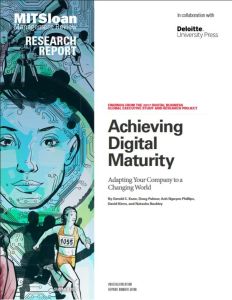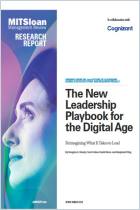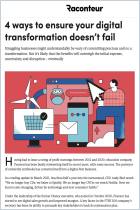加入 getAbstract 阅读摘要

加入 getAbstract 阅读摘要
Gerald C. Kane, Doug Palmer, Anh Phillips, David Kiron and Natasha Buckley
Achieving Digital Maturity
Adapting Your Company to a Changing World
MIT Sloan Management Review, 2017
看看什么内容?
What does it take to rank high among digitally advancing firms?
Recommendation
For several years, MIT Sloan Management Review and Deloitte have been conducting annual surveys of thousands of business leaders and managers – along with supplemental interviews – to study the best practices of maturing digitally. In this report, a team of five MIT Sloan Management Review contributors presents its insights; examples involving global retailer Walmart and other prominent companies make each practice concrete. Learn if your firm has what it takes to keep pace in the digital race – and what measures to take if you’re lagging.
Summary
About the Authors
Gerald C. Kane, Doug Palmer, Anh Nguyen Phillips, David Kiron and Natasha Buckley are contributors to the MIT Sloan Management Review.






























Comment on this summary